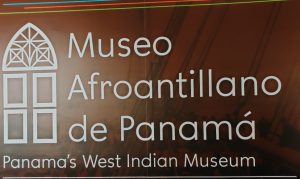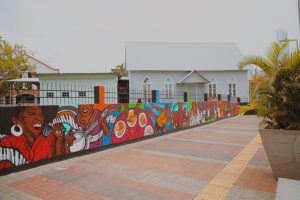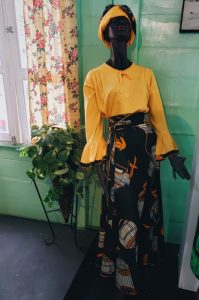Author: Mia Casas
Location: Panama City, Panama
Pronouns: She/Her/Hers

On Saturday, September 14, our cohort embarked on a trip to Panama City. Not knowing much about Panama, I did not know what to expect from the country. At dinner, one of our guides, Jorge, asked me what I knew about Panama previously. I looked at him with embarrassment, and admitted that I did not know much besides (1) it is home to the Panama Canal, and (2) it was once occupied by the United States. So, he asked me what I thought about Panama, so far. Truthfully, I told him I was surprised to see so many Afro-Latinos in Panama. (Both of our guides that day were Afro-Latinos). Previously, I was under the impression that most Afro-Latinos come from Caribbean countries, like Cuba, Puerto Rico and the Dominican Republic.
Jorge understood my misconception and shared that he experienced this in the United States before. Once, he lived in the US for about 2 years. He said that many African Americans would look at him crazy when they heard him speak Spanish, and give him a look that said, “How do you know how to speak Spanish?” Meanwhile, fellow Latinos were also astonished and said things to him like, “Who taught you how to speak Spanish?” So, although many, even other Latinos, are surprised by Afro-Latinos, Panamanians seem completely accustomed to the mixture of color that exists within their country.

Jonathan Davis served as one of our tour guides for four days in Panama City. Here he is pictured at Biomuseo, a museum of biodiversity at Panama.
Although within the United States exists a multitude of different cultures and ethnicities, certain environments are not always representative of this diversity. I was surprised to see every color of Panamanians eating at the restaurant. Similar to the United States, Panama has also had a history of racism towards Afro-descendants. We had the opportunity to visit the Afro-Antillean Canal Workers Museum, a place that honors the contributions and hardships of African descendants in the country. As the name of the museum implies, many Afro-descendants, particularly from Jamaica and Barbados, traveled to Panama to work on the construction of the Panama Canal. However, Afro-descendants and other minority groups commonly faced racial discrimination that manifested itself in segregational practices and wage inequalities between black and white workers.

This mural is found right outside the Afro-Antillean Canal Workers Museum, and pays homage to the Afro ancestry of the country.
Many of the Panama Canal laborers stayed in Panama, despite the hardships, due to the lack of employment in their home countries. The museum recognizes individuals’ contributions in the fields of politics, entrepreneurship, sports, civic engagement, arts, and education. In present day, roughly 15% of Panama’s population are Afro-Panamanian. Some have even become popular figures in United Statesian media. For example, The Fresh Prince of Bel-Air star Tatyana Ali is remembered most for her role as Ashley Banks, a principal family member in the household of Will Smith. Another upcoming star, Tessa Thompson, also has Afro-Panamanian heritage, and is known for her performance as the Valkyrie in the Marvel Comic Universe and earlier performances in the Creed series.

These exhibits highlight Afro-Antillean culture in Panama.

Leave a Reply